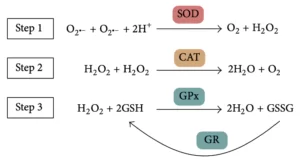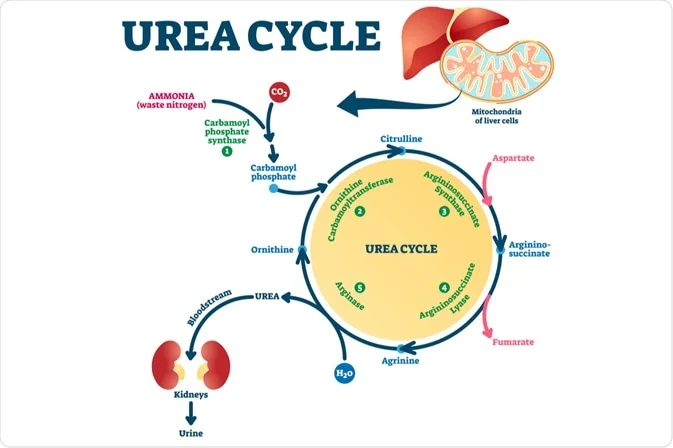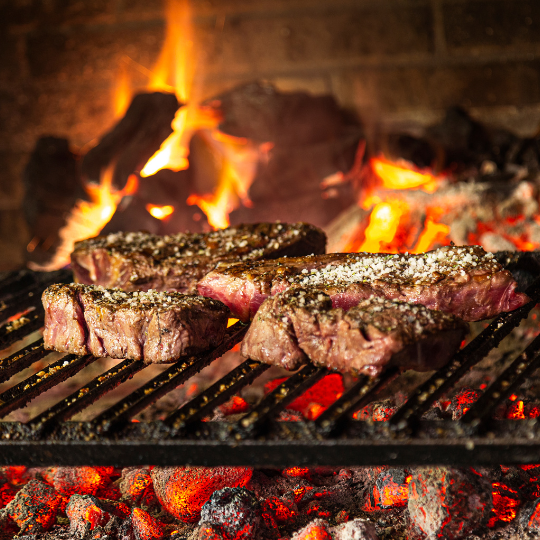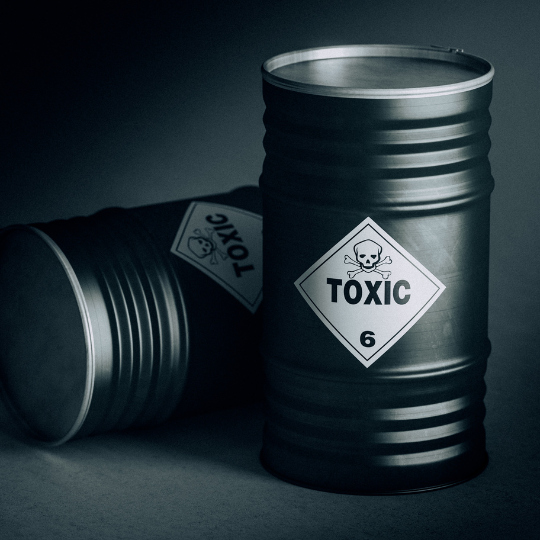Catalase basics
Catalase (CAT) is an enzyme that is found in almost all living organisms and plays a vital role in the metabolism of cells. Like its older cousin, glutathione, it is primarily responsible for the breakdown of hydrogen peroxide, a highly reactive compound that can damage cellular structures and DNA, into water and oxygen.
It acts downstream of Superoxide Dismutase (SOD), providing a counterweight to the Fenton reaction, which we already covered in a previous blog post. This process helps to protect cells from oxidative stress, which can lead to inflammation and cell death.
On the flip side, CAT can also use hydrogen peroxide to oxidize methanol, ethanol, formic acid, formaldehyde, nitrite and other toxins. This type of dual activity toward hydrogen peroxide makes CAT a crucial antioxidant enzyme.

CAT is a large enzyme that is made up of four subunits, each containing a heme group that is responsible for its catalytic activity. The heme group contains an iron atom that is able to bind to and reduce hydrogen peroxide, converting it into water and oxygen.
Catalase is found in high concentrations in cells that are exposed to high levels of oxidative stress, such as in the liver and red blood cells, but is also found in smaller amounts in other tissues, such as the eyes, skin, and hair. It has one of the highest enzymatic turnover rates: one catalase enzyme can change 40 million molecules of hydrogen peroxide into water and oxygen per second. Take that, Usain!

In addition to its role in the breakdown of hydrogen peroxide, catalase also plays a role in the production of energy in cells. It is involved in the conversion of pyruvate to acetyl-CoA, which is an important step in the production of energy through the citric acid cycle (a.k.a. the Krebs cycle).
Catalase activity
The activity of catalase can be affected by a number of factors, including genetics and lifestyle. One way in which genetics can affect the activity of catalase is through the presence of single nucleotide polymorphisms (SNPs), which are variations in a single DNA base that can alter the structure and function of a protein. Some SNPs in the gene that codes for catalase have been associated with changes in the enzyme’s activity, which can affect its ability to protect cells from oxidative stress. For example SNPs in rs769217, rs7943316 and rs761650208 have been associated with decreased CAT enzymatic activity, whereas the rs1001179 SNP seems to increase catalase expression.
To mitigate the reduced activity of catalase, a diet rich in fruits and vegetables, which are high in antioxidants, can help protect cells from oxidative stress. More specifically, the following compounds have been postulated to dramatically increase antioxidant defense, at least partly via increased CAT expression:
- Tea Catechins and Theaflavins
- Apple Polyphenols
- Blueberry Extract
- Soybean Isoflavones
- Black Rice Anthocyanins

Which ones of these are you consuming on a regular basis? Moreover, how is your catalase enzyme naturally working? Get in touch, get tested and support the activity of catalase to improve your overall health and longevity. Our genetic and metabolic optimization approach can put you on the right track.













